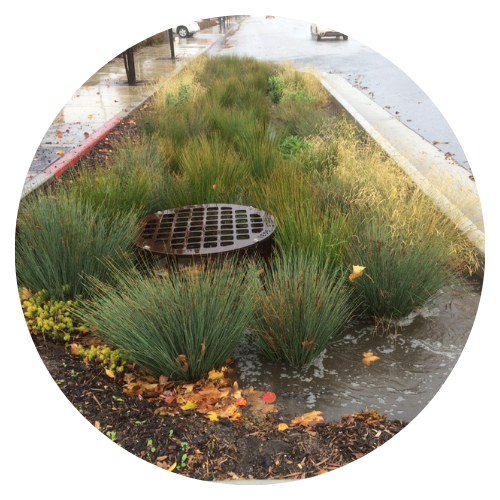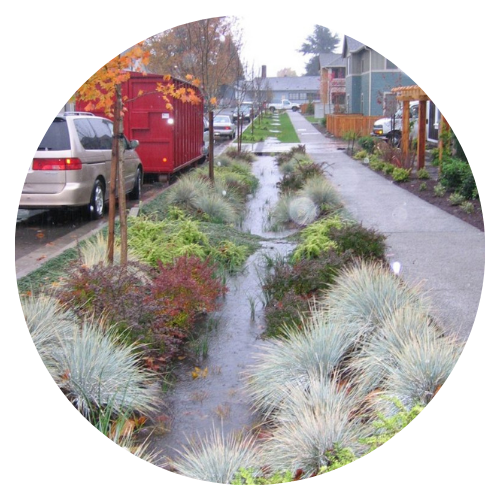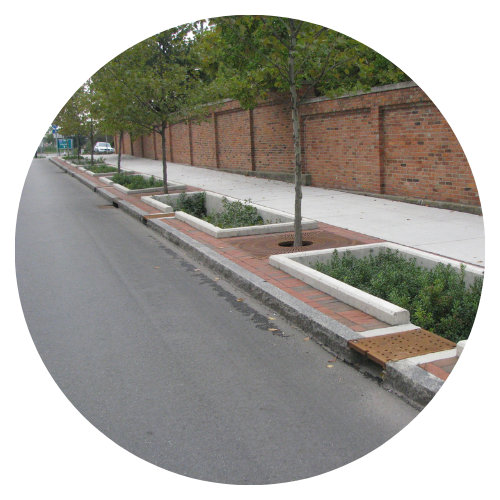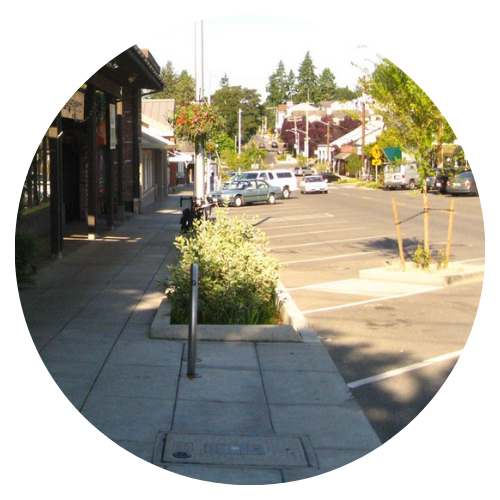Clarifying a Common Misunderstanding Regarding Bioretention Plant Selection
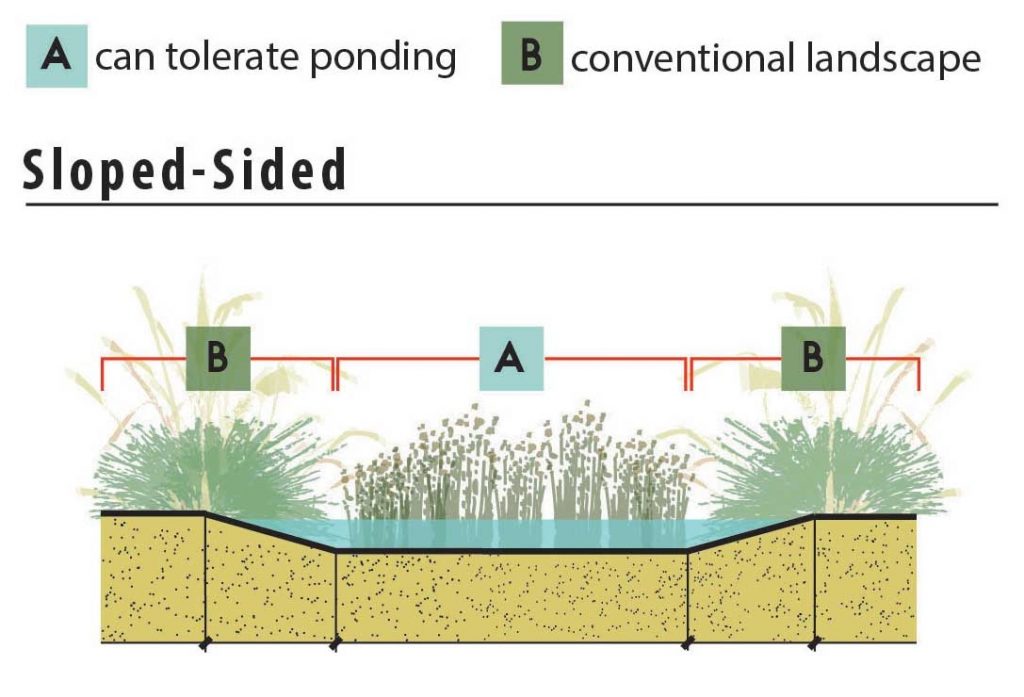
The photos below show two examples of bioretention facilities (click to enlarge). It’s tempting to think that all the plants within the facility are “bioretention plants.”
However, in general, only the center areas represent the stormwater functional zone and plants in this zone must be able to tolerate periodic inundation and ponding. Typically, plants around the outer edge do not experience ponding or inundation and plants selected for this outer zone can come from a much broader, more typical planting palette appropriate for the climate and application.
Trees in Bioretention Areas
Trees are an important feature in a community and provide multiple benefits, including stormwater management.
The LIDI bioretention plant list does not include trees. Why? Because there remains uncertainty as to which tree species are appropriate for placement in bioretention areas. For example, some trees will survive being planted where stormwater ponding occurs, others tolerate a side-slope location, but some trees may not survive/thrive in either. Additionally, careful consideration must be made to meet local municipal requirements for tree and parking lot trees, and selection must avoid species that generate excessive leaf litter that could cover the surface of the bioretention area and reduce infiltration or clog overflows.
Comprehensive designs that integrate trees and stormwater function can be done – see some examples below (click to enlarge) of ways to integrate both trees and stormwater management function.


